The post-apocalyptic genre presents a fascinating exploration of humanity and civilization, through the lens of a world that’s endured some form of cataclysmic event. From nuclear fallout to pandemic-induced devastation, these narratives often deliver a potent blend of drama, suspense, and introspection.
This genre serves to both entertain and provoke thought, posing existential questions on survival, morality, and the essence of civilization itself. If you’re intrigued by these desolate yet compelling landscapes, you’re in for a treat. This blog post brings you a curated list of some of the best post-apocalyptic books that take you through these dystopian realities.
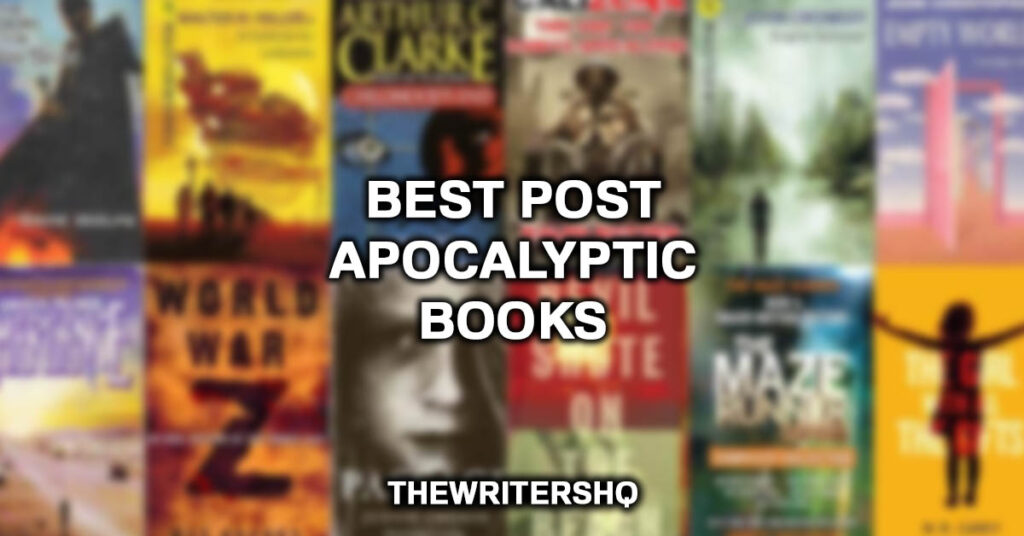
1. The Road by Cormac McCarthy
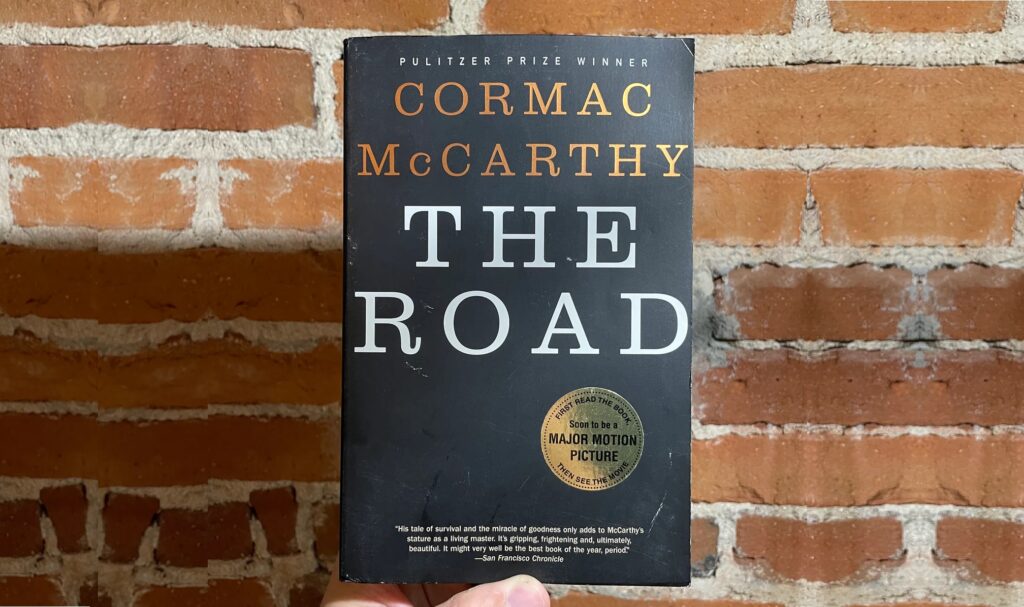
“The Road” is a haunting tale of a post-apocalyptic world, stripped of all but the barest vestiges of life. The story focuses on a man and his young son who traverse this bleak landscape, propelled by love and the primal instinct to survive.
A profound meditation on humanity and morality, McCarthy’s sparse, lyrical prose perfectly encapsulates the desolation that surrounds the duo. Throughout their journey, they confront starvation, the constant threat of death, and the worst of human nature, as embodied by roving bands of cannibals.
Quick Fact: Yet, despite the horror and heartbreak, this novel is also a beautiful testament to the unbreakable bond between father and son and their shared hope for a better future. It is this sliver of hope that makes their story not just bearable, but deeply affecting.
2. Station Eleven by Emily St. John Mandel
“Station Eleven” deftly weaves together a rich tapestry of narratives set before, during, and after a catastrophic flu pandemic decimates humanity. At its heart is the Traveling Symphony, a group of actors and musicians journeying through the desolate landscape, performing Shakespearean plays to scattered communities of survivors.
Among them is Kirsten Raymonde, who was only a child when the world collapsed. As the narrative progresses, we see how lives intertwine, how actions echo across time and space, and how art, memory, and humanity persist even in the face of great adversity.
This novel is a poignant exploration of life, loss, and survival that underscores the enduring power of art and the resilience of the human spirit. It is post-apocalyptic literature with a unique, compelling perspective, offering a message of hope amid chaos.
3. The Stand by Stephen King
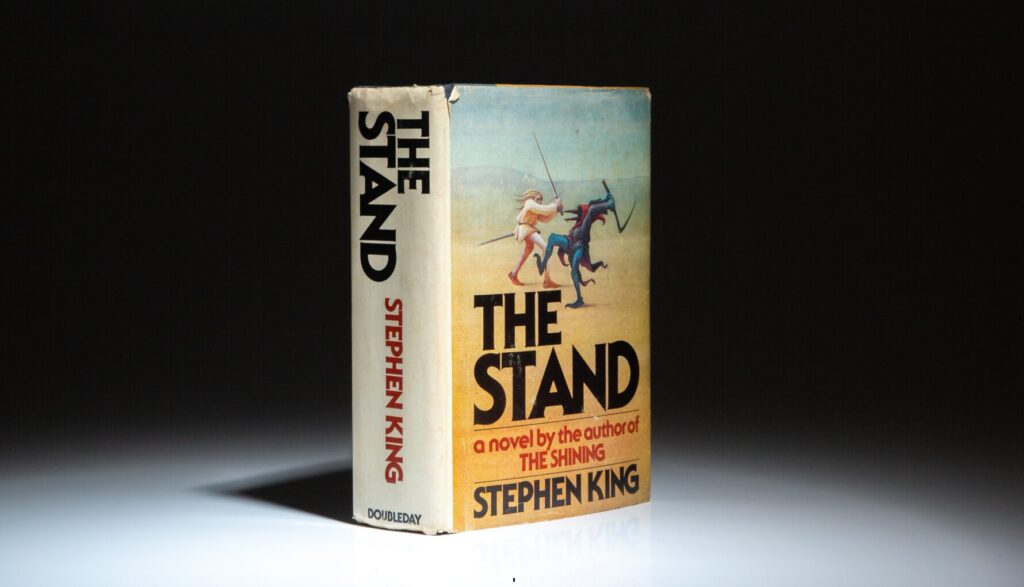
“The Stand” is a sprawling epic of a world ravaged by a superflu known as ‘Captain Trips’, which wipes out most of the world’s population. In the aftermath, the survivors find themselves in a struggle between good and evil. On one side is the frail, 108-year-old Mother Abigail, who draws to her the ‘good’ survivors.
On the other side is the demonic Randall Flagg, who amasses an army of corrupted souls in Las Vegas. The narrative threads converge in a tense climax, with the fate of humanity hanging in the balance. Throughout this voluminous time, King excels in character development, crafting a cast of characters that readers come to care deeply about.
“The Stand” remains one of King’s most beloved and enduring works, illustrating his mastery over the post-apocalyptic genre.
4. A Canticle for Leibowitz by Walter M. Miller Jr.
A unique and groundbreaking work in the genre, “A Canticle for Leibowitz” is a three-part novel set in a Catholic monastery in the American Southwest after a nuclear war decimated the world. The novel spans thousands of years, with each part set in a different era post the ‘Flame Deluge’.
The monks of the Albertian Order of Leibowitz dedicate themselves to preserving the remnants of mankind’s scientific knowledge until the world is once again ready for it. Through this engaging narrative, Miller presents a cyclical view of history and raises questions about the inevitability of humanity’s penchant for self-destruction.
Despite its grim backdrop, the novel is laced with black humor and a deep understanding of the human condition, making it a classic in post-apocalyptic literature.
5. The Postman by David Brin
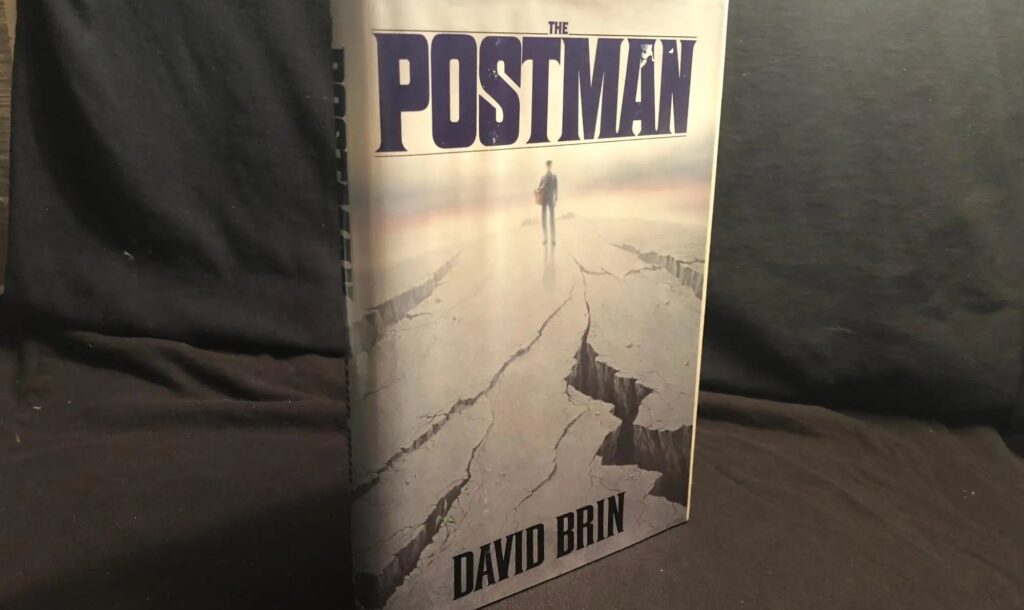
“The Postman,” tells the story of Gordon Krantz, a survivor of multiple wars that have left America in a state of feudal anarchy. When he stumbles upon a mail truck and dons the dead postman’s uniform and bag of undelivered mail, he is mistaken for a representative of the Restored United States.
As Gordon moves from town to town, he becomes a beacon of hope, sparking a movement of communication and unity among the isolated communities. However, the lie becomes increasingly complex to maintain, particularly when he has to face the ‘Holnists’, an authoritarian survivalist militia.
Brin’s novel explores themes of civilization, mythmaking, and the power of symbols and communication. Despite its bleak setting, “The Postman” ultimately delivers a message of hope and the resilience of the human spirit.
6. World War Z by Max Brooks
“World War Z” offers a chillingly realistic account of a global outbreak of the undead, as seen through a series of interviews with survivors from all walks of life and various parts of the world.
Quick Fact: This unique narrative structure enables Brooks to explore the political, social, and economic implications of the zombie apocalypse on a global scale, highlighting the strengths and flaws of various responses to the crisis.
From tales of panic and chaos to stories of bravery and survival, “World War Z” provides an expansive and deeply human exploration of a world grappling with an undead pandemic. The novel stands out for its meticulous detail, thoughtful world-building, and its commentary on geopolitics and human nature.
7. Swan Song by Robert R. McCammon
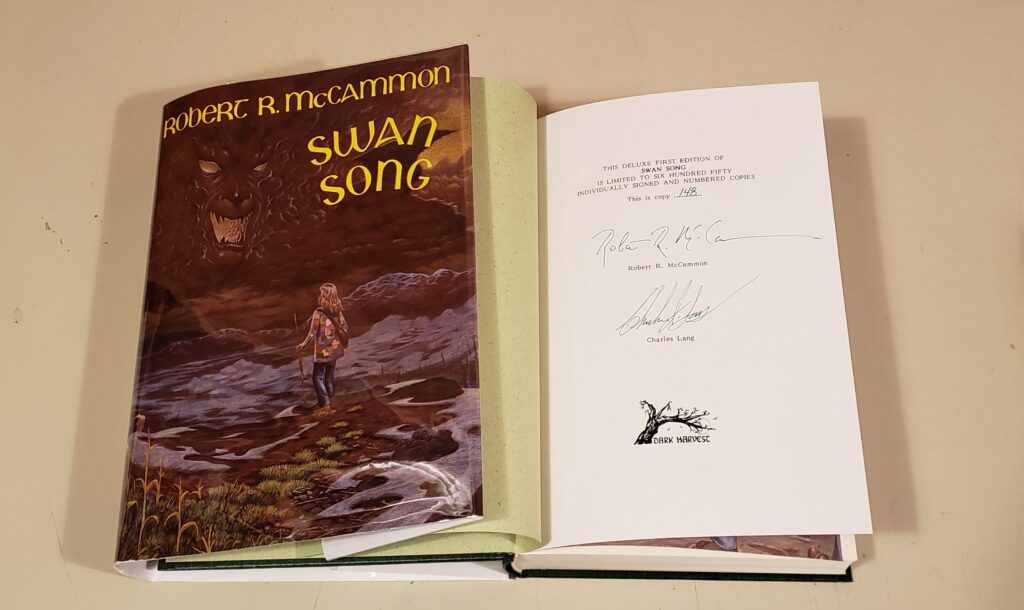
A sweeping post-nuclear epic, “Swan Song” follows a diverse cast of characters navigating a world devastated by nuclear war. Among them are Swan, a young girl with a mysterious power; Sister, a bag lady who becomes a prophet and the Man with the Scarlet Eye, a demonic figure who embodies the worst of the old world.
As these and other narratives converge, a battle between good and evil ensues, with the fate of the new world at stake. McCammon weaves a story that is as much about human resilience and the possibility of regeneration as it is about devastation.
Rich in its characterization and world-building, “Swan Song” is an immersive and poignant exploration of humanity’s capacity for both destruction and redemption.
8. The Passage by Justin Cronin
“The Passage” is the first book in a trilogy that reimagines the vampire mythos in a post-apocalyptic setting. The story begins with the U.S. government’s secret experiment to create super-soldiers going horribly awry, resulting in the creation of highly infectious, vampiric creatures.
The narrative then leaps forward nearly a century to a fortified colony of survivors clinging to existence in a world overrun by these creatures. Among them is a mysterious girl who may hold the key to humanity’s survival.
Spanning decades and unfolding through multiple perspectives, “The Passage” is a gripping saga of survival, sacrifice, and the enduring power of human connections in a world changed beyond recognition.
9. Earth Abides by George R. Stewart
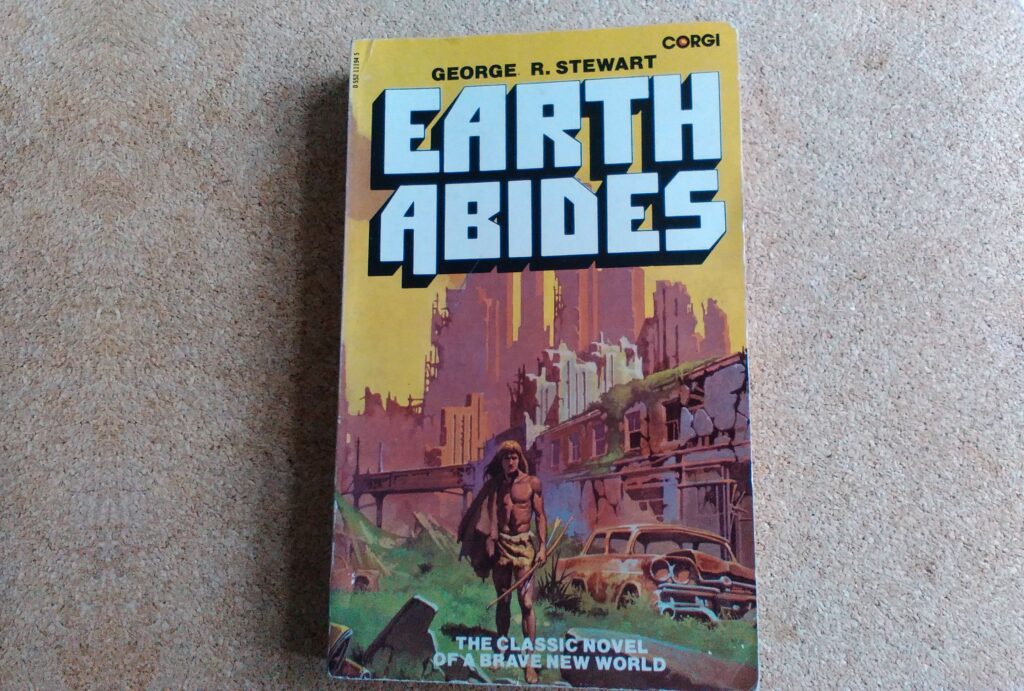
One of the earliest works in the genre, “Earth Abides” tells the story of Isherwood “Ish” Williams, a survivor of a deadly pandemic that has wiped out nearly all of humanity. As he navigates the ruins of civilization and builds a community with other survivors, he becomes a reluctant leader and observer of the slow decline of human culture and knowledge.
Stewart’s novel is a thoughtful meditation on the fragility of civilization, the resilience of nature, and the adaptability of man. Its exploration of how quickly the trappings of civilization can fade, and what endures, makes “Earth Abides” a timeless classic in post-apocalyptic literature.
10. I Am Legend by Richard Matheson
I Am Legend” centers around Robert Neville, who appears to be the last human in a world overrun by vampires. By day, he fortifies his home and hunts the undead; by night, he barricades himself in and fends off their attacks.
As the narrative progresses, Neville seeks to understand the nature of the plague that has transformed humanity, struggling with loneliness and the crushing weight of being the last of his kind. Matheson’s novel is a powerful exploration of isolation, despair, and the human will to survive.
Its influence on the genre can be seen in numerous works of post-apocalyptic fiction and film that followed.
11. The Girl with All the Gifts by M.R. Carey
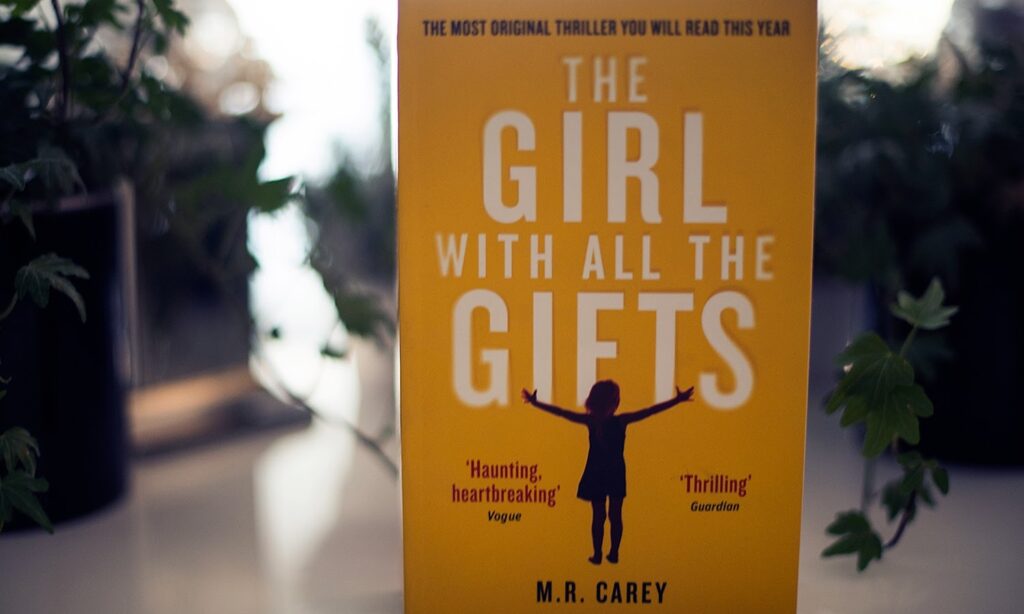
In a world where a fungal pathogen has turned most of the human population into flesh-eating ‘hungries’, a small group of children seems to hold the key to a cure. Among them is Melanie, the titular girl with all the gifts, whose extraordinary intellect and love for her favorite teacher, Miss Justineau, sets the story in motion.
As the secure facility they inhabit falls to the hungries, Melanie, Justineau, a scientist, and a soldier must navigate a dangerous world in search of sanctuary. “The Girl with All the Gifts” is a gripping, character-driven story that reimagines the zombie apocalypse and explores what it means to be human.
12. The MaddAddam Trilogy by Margaret Atwood
This trilogy – consisting of “Oryx and Crake”, “The Year of the Flood”, and “MaddAddam” – is a masterful exploration of a world before, during, and after a bioengineered apocalypse. Atwood’s dystopia is filled with genetically modified creatures, environmental devastation, and a stark divide between the haves and have-nots.
The narrative focuses on a diverse cast of characters whose lives intertwine in surprising ways, and who must navigate this dangerous new world while grappling with their own pasts. Atwood’s satirical touch and intricate world-building make this trilogy a standout in post-apocalyptic literature.
13. Parable of the Sower by Octavia E. Butler
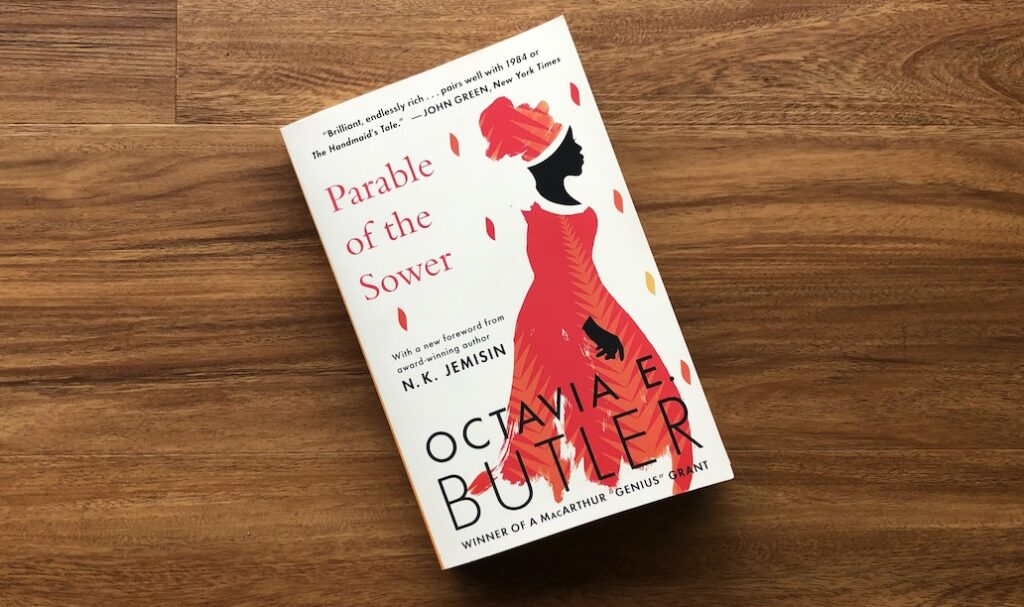
Set in a near-future California ravaged by climate change, economic crisis, and societal collapse, “Parable of the Sower” tells the story of Lauren Olamina, a young woman with the ability to feel others’ pain.
As she navigates this harsh world and envisions a future where humanity might survive, she develops a new belief system, Earthseed, aimed at preparing humankind for life beyond Earth. Butler’s novel is a gripping exploration of resilience, community, and the power of belief in the face of adversity.
14. On the Beach by Nevil Shute
“On the Beach” is a poignant tale set in Australia after a nuclear war has wiped out most of the world. The residents, including a U.S. submarine captain and his Australian love interest, must come to terms with the impending arrival of a deadly radiation cloud.
Quick Fact: Shute’s novel is less about the struggle for survival and more about the dignity in facing the end, making it a unique and deeply human entry into the genre.
15. Bird Box by Josh Malerman
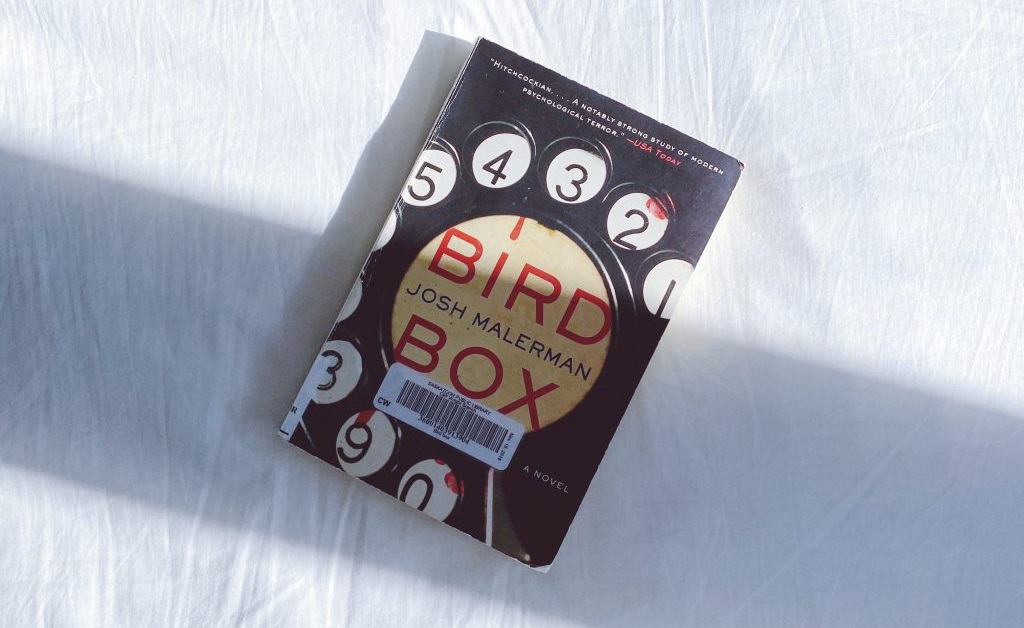
Something is out there, something that, if seen, drives people to deadly violence. In this chilling world, Malorie and her two children must navigate to safety blindfolded. “Bird Box” is a taut, suspenseful story of survival in the face of an unfathomable threat. It is a testament to a mother’s love and the will to live, even in a world overrun by terror.
16. A Boy and His Dog at the End of the World by C.A. Fletcher
Griz lives in a world where humanity is almost extinct. When a stranger steals his dog, Griz embarks on a daring journey to retrieve his beloved pet. Along the way, he faces challenges that test his courage, resilience, and faith in humanity.
This touching post-apocalyptic tale reminds readers of the enduring bonds between humans and their pets and the lengths one would go to preserve those bonds.
17. The Book of M by Peng Shepherd
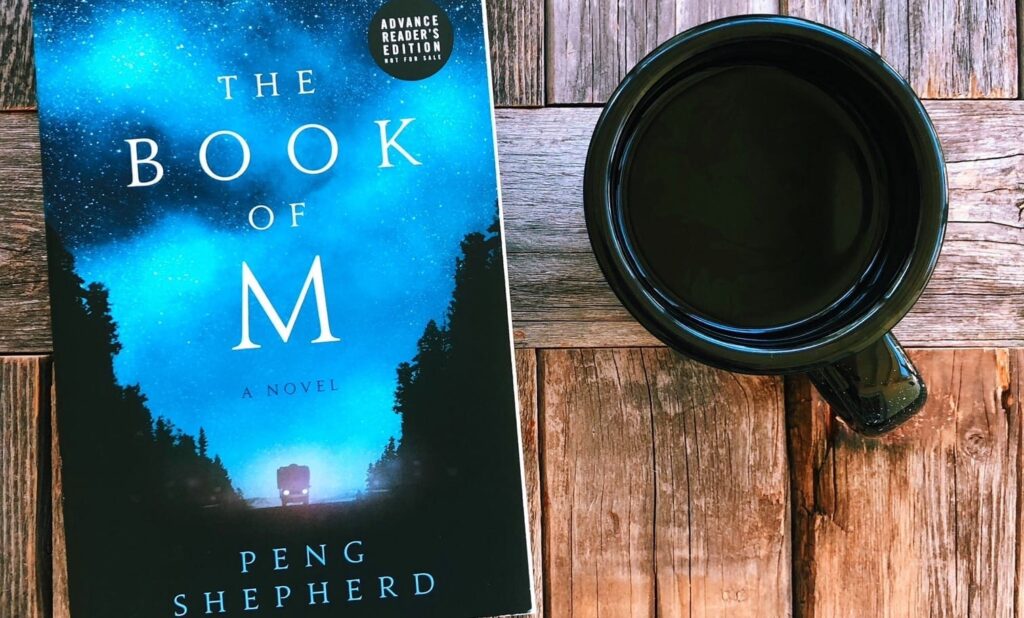
In a world where people lose their shadows and subsequently, their memories, Ory and his wife Max hold out in an abandoned hotel, hoping for a cure. But when Max loses her shadow and runs away, Ory follows her trail across a dangerous, unrecognizable America.
“The Book of M” is an inventive and heart-wrenching exploration of memory, identity, and love in a world turned upside down.
18. The Dog Stars by Peter Heller
After a flu pandemic wipes out most of humanity, Hig survives in a small airplane hangar with his dog and a cantankerous fellow survivor. When a random transmission sparks hope of life beyond his small compound, he must decide whether to risk leaving the safety of his home.
“The Dog Stars” is a tender and uplifting post-apocalyptic novel that explores the power of hope and the importance of companionship.
19. The Water Will Come: Rising Seas, Sinking Cities, and the Remaking of the Civilized World by Jeff Goodell
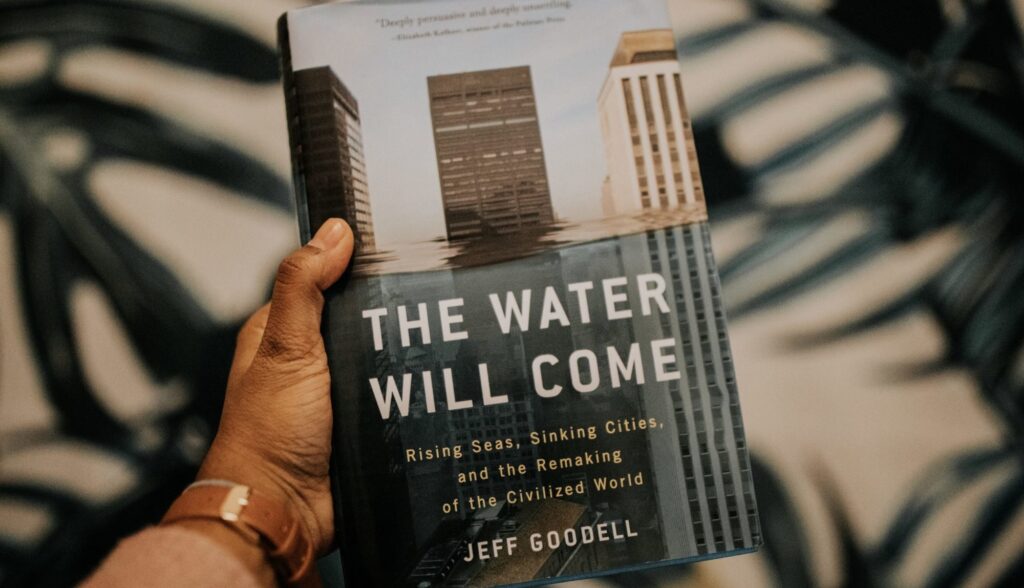
While not fiction, “The Water Will Come” is a chilling exploration of the real-world implications of climate change. Through interviews and investigative reporting, Goodell presents a comprehensive picture of the impending crisis posed by rising sea levels.
Expert Tip: This book is a must-read for those interested in understanding the stark realities of our changing world.
20. The Drowned World by J.G. Ballard
In a future where solar radiation has melted the polar ice caps and turned Europe into a series of lagoons, humans must confront a new, tropical world. This novel is less about survival and more about the psychological impacts of drastic environmental change. Ballard’s eerie, hallucinatory vision of a drowned world is a classic in climate fiction.
21. Alas, Babylon by Pat Frank
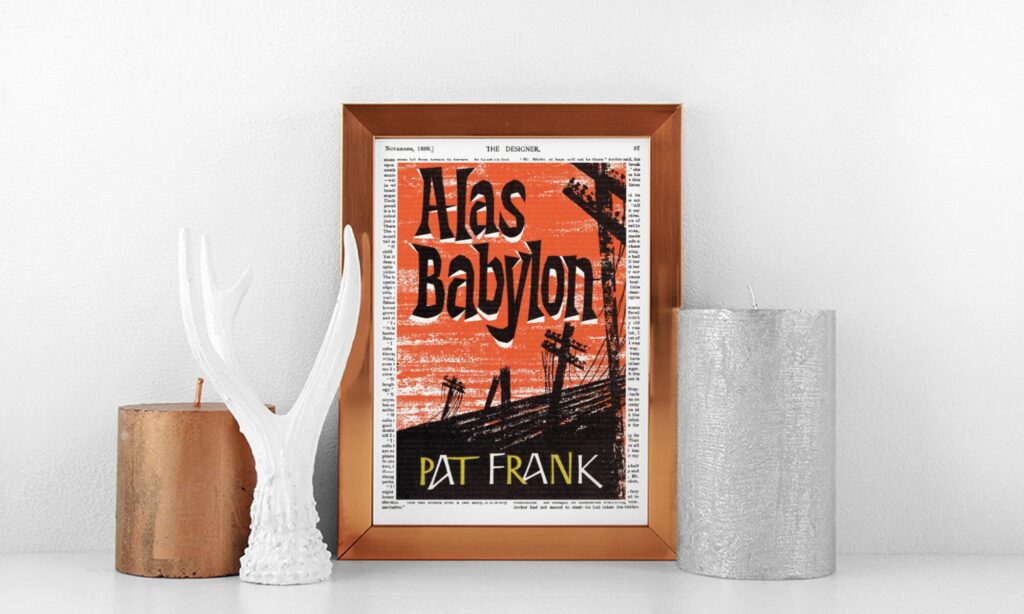
“Alas, Babylon” is a classic post-apocalyptic novel that explores the aftermath of a nuclear war between the United States and the Soviet Union. The story focuses on Randy Bragg, a former lawyer based in the small town of Fort Repose, Florida, who must step up as a leader when his town is cut off from the rest of the world.
From finding food and clean water to defending against marauders, Bragg and his fellow survivors are thrust into a world where survival is paramount, and society’s rules are rewritten. A striking exploration of resilience and community, this book emphasizes the importance of cooperation and resourcefulness in the face of unprecedented adversity.
It’s a sobering reminder of the fragility of civilization and the enduring strength of the human spirit.
22. Severance by Ling Ma
“Severance” is a unique blend of satirical office drama and post-apocalyptic survival tale. The novel follows Candace Chen, a millennial office drone leading an unfulfilling life in New York City, who becomes one of the last survivors of a fungal infection that turns people into routine-driven zombies.
As she navigates this new reality, Candace struggles with the monotony of her pre-apocalypse life, which, in many ways, mirrors the mindless repetition exhibited by the infected.
Ling Ma’s novel is a brilliant commentary on capitalism, immigration, and the monotony of work culture, using the post-apocalyptic genre to examine the human condition in an age of global consumerism.
23. Wool by Hugh Howey
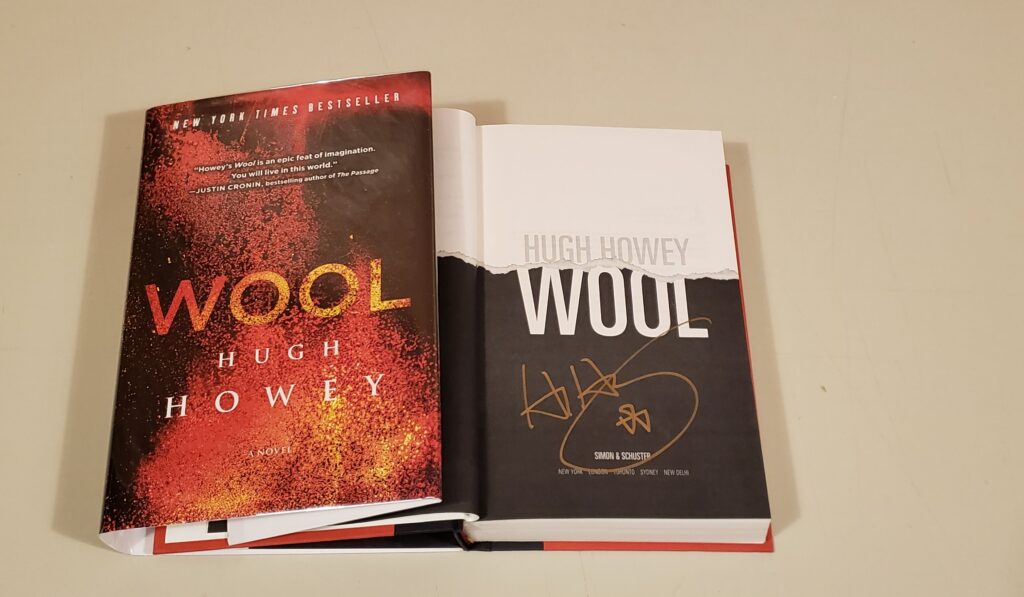
In a future where the outside world has become uninhabitable, the remnants of humanity live in a vast underground silo. Society in the silo is highly regulated, with strict rules and roles that ensure its survival. When the silo’s sheriff, Holston, asks to go outside a request that, by law, must be granted mechanic Juliette is appointed to replace him.
As she navigates her new role, Juliette begins to unravel the mysteries and lies that underpin the silo’s existence. “Wool” is an engrossing exploration of a dystopian society characterized by deception, rebellion, and the indomitable will of the human spirit.
24. Lucifer’s Hammer by Larry Niven and Jerry Pournelle
When a comet slams into Earth, it triggers catastrophic tsunamis, earthquakes, and climate changes that wipe out most of civilization. The novel follows a diverse cast of characters scientists, politicians, astronauts, and ordinary citizens as they struggle to survive in a world thrown back to the pre-Industrial Age.
“Lucifer’s Hammer” is a meticulously researched and detailed account of the destruction caused by a comet strike and the societal breakdown that follows. Despite its bleak premise, the novel underscores the importance of knowledge, resourcefulness, and cooperation in the face of disaster.
25. The Fifth Season by N.K. Jemisin
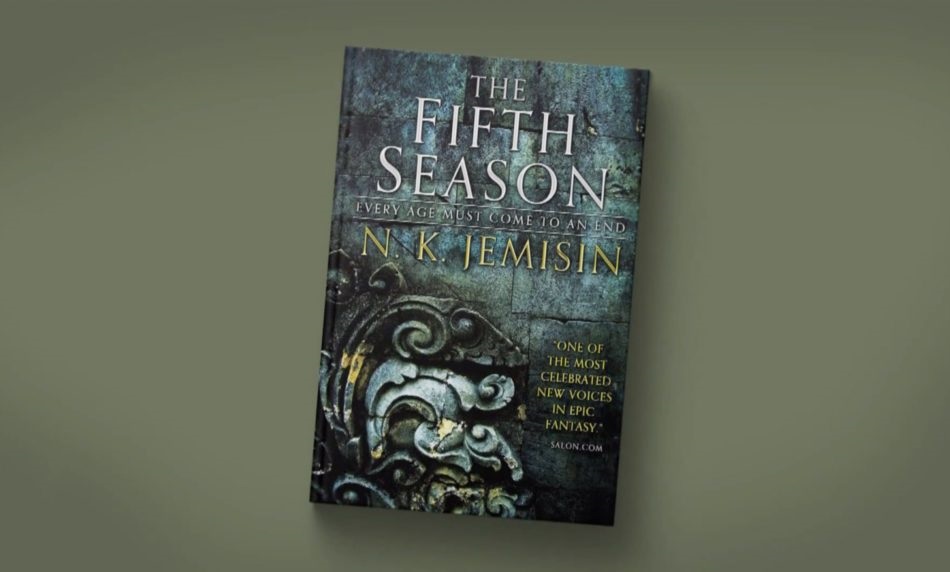
The first book in Jemisin’s Broken Earth trilogy, “The Fifth Season” is set in a world periodically devastated by catastrophic climate changes events known as Seasons. In this volatile world, some individuals known as orogenies have the ability to manipulate thermal and kinetic energy to prevent or create earthquakes.
However, they are feared and oppressed by society. The novel follows three female orogenes whose stories intertwine across time and space, leading to a shocking revelation. With its complex characters, intricate world-building, and exploration of systemic oppression, “The Fifth Season” is a groundbreaking work in post-apocalyptic fantasy.
26. Blindness by José Saramago
This Nobel laureate’s masterwork describes a society decimated by an epidemic of blindness. As the affliction spreads, social structures crumble, and the veneer of civilization peels away to reveal the basest elements of human nature. Amid the chaos, a small group of blind individuals led by the only person who can still see, a doctor’s wife, must band together for survival.
While “Blindness” is grim and brutal, it also offers a profound exploration of humanity, dignity, and the human spirit’s will to endure. With hauntingly beautiful prose and insightful social commentary, it provides a thought-provoking metaphor for society’s blindness to its own faults.
27. The Road by Cormac McCarthy
In this Pulitzer Prize-winning novel, McCarthy presents a post-apocalyptic world in its bleakest form, reduced to ash and populated by cannibals. The story follows a father and son as they traverse this desolate landscape, pushing a shopping cart of meager possessions and struggling to survive.
Despite its grim backdrop, “The Road” is essentially a story about love the deep, abiding love of a father for his son. Their relationship is a beacon of hope and humanity amid the surrounding darkness. McCarthy’s sparse, beautiful prose and the powerful emotional core of the story make this novel a standout in the genre.
28. Station Eleven by Emily St. John Mandel
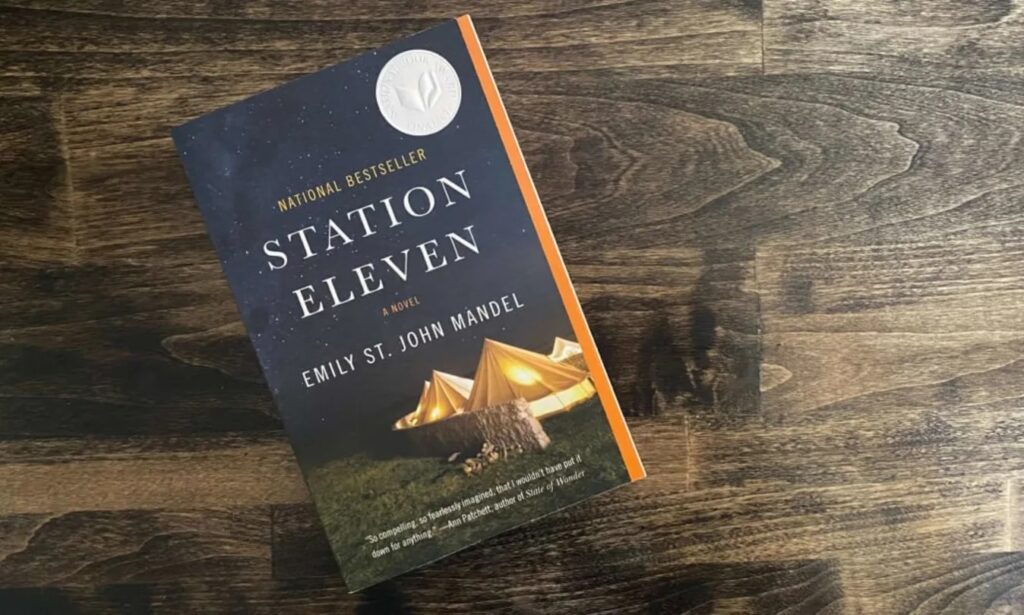
A pandemic known as the “Georgia Flu” has wiped out most of the world’s population in this critically acclaimed novel. The story revolves around a group of actors and musicians, known as the Traveling Symphony, who roam the Great Lakes region, performing Shakespeare plays and orchestral concerts for the scattered communities of survivors.
The narrative swings back and forth in time, connecting the lives of the Symphony members to the pre-pandemic world. Mandel’s novel is a lyrical exploration of art, memory, and the deep human connections that endure amid chaos and loss. It suggests that even in the wake of catastrophe, beauty, and art can persist, and humanity can rebuild.
29. A Canticle for Leibowitz by Walter M. Miller Jr.
After a nuclear war, a group of monks in the Utah desert dedicates themselves to preserving humanity’s remaining knowledge.
Spanning over a thousand years, the novel is divided into three parts, each focusing on a significant period in the monks’ order, the Albertian Order of Leibowitz. Miller’s epic tale is a meditation on the cyclical nature of history, the relationship between church and state, and the tension between faith and reason.
Quick Fact: “A Canticle for Leibowitz” stands as a classic in the post-apocalyptic genre, offering a unique blend of dark humor, tragic irony, and deep insight into the human condition.
30. Children of Men by P.D. James
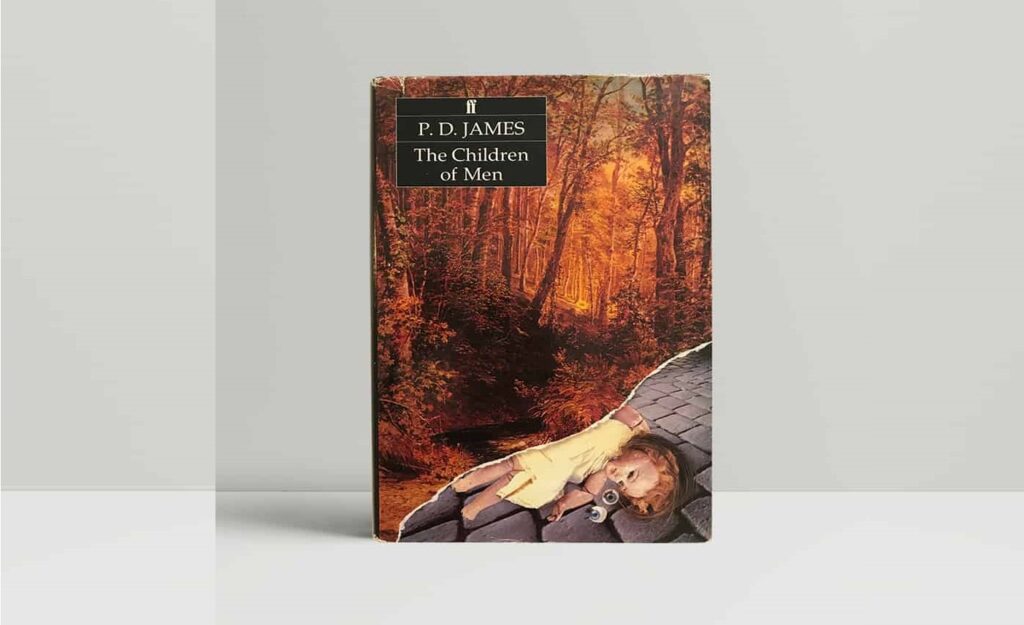
In a world where humans have become infertile and society is crumbling as a result, Theo Faron, a disillusioned Oxford historian, is drawn into the political machinations of a group of revolutionaries. Their goal is to fight against the oppressive government and, remarkably, they have the only pregnant woman in their care.
As Theo becomes their unlikely protector, he is drawn out of his isolated existence into a desperate struggle for the future of humanity. “Children of Men” is a deeply human exploration of hope, despair, and the innate desire for societal and familial connections.
Through her dystopian narrative, P.D. James probes profound questions about the meaning of life in the face of its possible extinction.
Post-Apocalyptic vs. Dystopian Fiction:
While the genres of post-apocalyptic and dystopian fiction often overlap, they are distinct in their focus. Post-apocalyptic fiction primarily deals with the aftermath of a catastrophic event that has led to the collapse of civilization. The catastrophe could be a pandemic, nuclear warfare, natural disaster, or any other event that results in widespread destruction.
The stories usually explore themes of survival, rebuilding, and adapting to the changed world. On the other hand, dystopian fiction explores societies that are oppressive, unjust, and usually under the control of a totalitarian government or organization. The emphasis is more on the social, political, and moral failings of these societies.
A dystopian society could be technologically advanced or backward and may not necessarily be the result of an apocalyptic event.
Apocalyptic vs. Post-Apocalyptic Fiction:
Apocalyptic fiction centers around the event of the catastrophe itself – the lead-up, the event, and its immediate aftermath. It often includes themes of chaos, panic, and the struggle for survival amidst the immediate crisis.
Post-apocalyptic fiction, meanwhile, is set after a catastrophic event has occurred, often years or generations later. It explores the long-term effects of the apocalypse on society, culture, and individuals. It often delves into how people have adapted to their new circumstances and how society has been reshaped.
Post-Apocalyptic Genre:
The post-apocalyptic genre is characterized by the exploration of life following a cataclysmic event that leads to civilization’s collapse. This genre often explores themes of survival, community, and the human condition.
It raises questions about morality, humanity, and civilization in extreme circumstances, making it a rich field for character development and exploration of human resilience and adaptability.
The popularity of the Post-Apocalyptic Genre:
The popularity of the post-apocalyptic genre can be attributed to a few factors. Firstly, these stories allow readers to explore ‘what if’ scenarios, letting them imagine how they and society would react and adapt to extreme circumstances.
Secondly, they offer a lens to critique and reflect upon our current society and its vulnerabilities by presenting a world where our available systems have collapsed. Thirdly, they can be thrilling and suspenseful, offering high-stakes narratives of survival and adaptation.
Lastly, post-apocalyptic stories often carry potent metaphoric weight, serving as allegories for various real-world issues like climate change, pandemics, nuclear warfare, or societal collapse.
Why is the post-apocalyptic genre often linked with science fiction?
Post-apocalyptic stories often revolve around imagined future scenarios, catastrophic events, and technological developments that drastically reshape society. These elements are also common in science fiction, which speculates about future societies, technological advancements, and their potential impacts. Consequently, the genres often overlap.
Furthermore, many apocalyptic scenarios, like nuclear disasters, pandemics, or climate change, involve scientific and technological aspects. As such, post-apocalyptic fiction often uses scientific elements to build its narratives, thereby sharing a strong connection with the science fiction genre.
Why do some post-apocalyptic stories focus on themes of hope and resilience?
Post-apocalyptic stories, despite their often grim settings, frequently focus on themes of hope and resilience to highlight the indomitable nature of the human spirit. These narratives underline the ability of individuals and communities to endure, adapt, and rebuild even in the face of unimaginable adversity.
By emphasizing hope and resilience, these stories serve as a testament to human tenacity and the enduring belief in a better future, even in the harshest circumstances.
Post-apocalyptic fiction often uses its unique settings to explore social and political themes. By presenting a world where established societal and political structures have collapsed, these stories can scrutinize and critique aspects of our current society.
The struggle for power, formation of new social orders, exploitation, inequality, and questions of morality and humanity under extreme conditions are often explored. This enables a critique of societal norms and political systems, highlighting their flaws, strengths, and vulnerabilities.
Are post-apocalyptic narratives pessimistic or optimistic?
Post-apocalyptic narratives can be both pessimistic and optimistic, often at the same time. On one hand, they depict the collapse of civilization, which can be viewed as a pessimistic commentary on the fragility of our societal structures.
On the other hand, they frequently highlight human resilience, adaptability, and the capacity for hope and renewal in the face of catastrophe, offering an inherently optimistic view of the human spirit. The balance between these perspectives varies across different stories, reflecting diverse outlooks on human nature and our collective future.
How does post-apocalyptic fiction relate to our real-world fears and anxieties?
Post-apocalyptic fiction often mirrors real-world fears and anxieties, such as those related to climate change, pandemics, nuclear warfare, or societal collapse. By creating narratives around these issues, the genre allows us to confront and explore these fears in a safe, fictional context.
It provides a space to contemplate potential futures, examine our individual and societal responses, and reflect upon our actions and choices in the present.
What role does nature often play in post-apocalyptic fiction?
Nature often plays a significant role in post-apocalyptic fiction. It can be a source of danger, providing harsh environments that characters must navigate. It may also serve as a source of solace or renewal, highlighting themes of resilience and rebirth.
Furthermore, the response to altered or hostile natural environments can serve as commentary on environmental issues, like climate change and pollution, emphasizing the necessity of harmonious coexistence with nature.
Why is there often a focus on community and human connections in post-apocalyptic stories?
The focus on community and human connections in post-apocalyptic stories underscores the importance of collective action and solidarity in the face of adversity. These narratives often explore how people come together to form new societies, uphold shared values, and ensure mutual survival.
They emphasize the strength found in human connections and the crucial role of the community in providing emotional support, maintaining societal structures, and preserving human culture and knowledge.
How does post-apocalyptic fiction challenge conventional notions of morality and ethics?
In the face of survival and societal collapse, conventional notions of morality and ethics can be put to the test. Post-apocalyptic fiction often explores how individuals and societies negotiate their moral compass when faced with extreme conditions.
It presents situations where the line between right and wrong may blur, forcing characters to make difficult ethical decisions for survival or the greater good.
What is the significance of children and the concept of future generations in post-apocalyptic fiction?
Children and future generations often symbolize hope and renewal in post-apocalyptic fiction. They represent the continuation of humanity and the potential for creating a better, more equitable society. They can also embody the legacy of the past and the responsibility of the present generation to preserve knowledge, culture, and values for the future
Can post-apocalyptic fiction influence our approach to real-world crises?
By exploring potential future crises and their aftermaths, post-apocalyptic fiction can influence our approach to real-world problems. It encourages us to think critically about our actions, the sustainability of our societal structures, and our preparedness for crises.
It can foster empathy, resilience, and a greater understanding of diverse perspectives, prompting us to strive for proactive, collective solutions to current and potential challenges.
Conclusion
From intriguing speculations about future societies to profound explorations of human resilience, the post-apocalyptic genre continues to captivate readers with its unique blend of suspense, social critique, and psychological insight.
Whether it’s a harrowing tale of survival or a hopeful narrative of rebuilding and renewal, post-apocalyptic fiction allows us to confront our deepest fears, question our societal structures, and reflect on our place in the world.
As we navigate our own real-world challenges, these stories remind us of our capacity for resilience, adaptability, and the enduring power of human connection. So, pick a book from this list, settle into a comfortable spot, and prepare for it.
